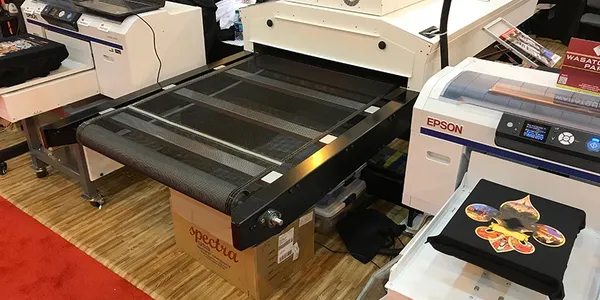
by Michael Best | Feb 5, 2024 | General interest
Who’s really your customer and what do they actually want? How much have you paused and contemplated that question?
Here is an of excerpt from Seth Godin’s book, This is Marketing, to demonstrate why you should contemplate the question as it relates to your business . . .
“Americans spent more than twenty-four billion dollars on dog food last year. The average price has has skyrocketed, and so has the gourmet nature of ingredients, like sweet potatoes, elk, and free-range bison..
And yet, I’ve never seen a dog buy dog food.
Have you?
Dog food might be getting more delicious as it gets more expensive, but we actually have no idea. We have no clue whether dogs enjoy it more, because we’re not dogs.
But we can be sure that the dog owners like it more.
Because dog food is for dog owners. It’s for the way it makes them feel, the satisfaction of taking care of an animal the responds with loyalty and affection, the status of buying a luxury good, and the generosity of sharing it.
Some dog owners want to spend more on the dog food they buy. Some want gluten-free dog food, loaded with high-value placebos.
But lets not get confused about who all this innovation is for. It’s not for the dogs.
It is for us.
A marketer for a dog food company might decide that the secret of more dog food sales is to make a food that tastes better. But that requires understanding how a dog thinks, which is awfully difficult.
It turns out that the right formula is to make a dog food that dog owners want to buy.”
Who’s really your customer and what do they actually want?

by Michael Best | Feb 1, 2024 | General interest
Last week I had a conversation with Pablo Forno of Grand Slam Sports of Okotoks, Alberta. I asked for the conversation because I’d heard that Pablo had an interesting perspective on the DTG versus screen printing debate. He had switched all his production from screen printing to direct to garment but a year later switched back a significant portion of his production to screen printing. I was interested to find out why.
Grand Slam Sports prints team uniforms in addition to regular, multi-colour prints on tees and sweats. The DTG printer is an Epson F2100 and the screen-printing press is a 4-colour, 4-station. Printing exclusively on the DTG printer wasn’t working for Pablo mainly because the garments have to be pre-treated and then racked to dry overnight. In addition to that, Pablo found that he had to heat press the garments to ensure that they were properly dry and ready for the printing.
For team uniforms that are usually polyester requiring only one or two-colour prints, he has found that it’s much quicker and more cost effective to screen print. But, the DTG printer is still used for short, multiple-colour runs.
So, if you’re considering a DTG printer you’d be well advised to consider it, not as a replacement for your screen-printing press, but rather as supplemental. And, of course, you need to have a very clear understanding of the financial impact and the cost-benefit aspect of the production balancing act you’re considering
Credit: Pablo Forno at www.grandslamcanada.com

by Michael Best | Dec 18, 2023 | General interest
Let’s not kid ourselves . . . As small business owners we can’t deny that we suck at work-life balance. We grind endlessly. We don’t quit at 5.00 pm, we check emails all the time outside normal work hours, we feel guilty if we don’t “just pop in for a short while” to work at weekends, and we don’t take proper vacations, And we wear this as a badge of honour. There’s the old joke: “I own my own business so, yes, I get to choose my work hours. I get to choose which twenty out of twenty-four I’m going to work!”
The truth though is that it’s not a badge of honour and it’s not a joke; it’s a tragedy. It’s bad for our health (physical and mental), bad for family life, tough on those closest to us, and no way to live a balanced, fulfilling life. And we all know this.
So what to do about it? The first thing to realize is that it has to change. And the second thing to realize is that there’s no one-fits-all solution. But this doesn’t mean that you can delay finding a better work-life balance. What constitutes the right work-life balance will vary over time and have to be adjusted according to prevailing circumstances. So, it’s a work in progress. But “work in progress” is the key. It’s both something to work at and something that should always be in progress. If not, you will lapse back into choosing which twenty-two out of twenty-four hours you’re going to grind and your work-life balance will again be thrown out of whack.
if you have 9 minutes to spare for a humorous take on grinding at work, watch this Pardis Parker Ted talk.
Get off the treadmill and reconsider your work-life balance before it’s too late.

by Michael Best | Dec 14, 2023 | General interest
T-shirts are perfect for sampling. But there’s an effective way and a less-than-effective way to sample.
The purpose in sampling is to show off the product with the intention of provoking a sale. And the more the act of sampling and the nature and quality of the product excites and intrigues the recipient, the more likely it is to provoke a sale.
First, the less-than-effective way to sample . . . If you’re going to drop off a sample garment with no explanation and no follow up, don’t hold your breath waiting for results—they’re not coming.
So here, based on my own experience and that of others with whom I’ve discussed sampling, is what I’d suggest . . . be selective about whom you’re going to sample, that is, qualify them. Then take a page out of Apple’s book and package the sample spectacularly in a way that demonstrates your caring and creativity. The garment(s) should speak to your creative design talents and superb printing quality. I think you know what I mean—wow the recipient.
Just by handing over a sample packaged more like a special gift than a run-of-the-mill commercial sample, will charm the recipient and give you a much better chance of creating a favourable impression. A card with a short, appropriate note explaining that this is a sample of what you can do, will add to the effectiveness of the presentation. Finally, you must follow up to ask if the recipient has any questions and also to keep the contact going.
Sampling with care and charm is an inexpensive yet effective way of making and consolidating contacts, creating a good impression, and generating good vibes. And, as we all know, people prefer to do business with people they like .

by Michael Best | Dec 11, 2023 | General interest
Real life stories are a great way to make a point. And the point I want to make (yet again) with this story is that if small businesses don’t match big businesses in certain aspects, it will undermine their growth and survival prospects.
Of course, there are aspects to small businesses that differentiate them favourably from big businesses, but the one where so many of them fall down, is prompt and efficient service. Let me tell my story and you’ll see what I mean.
I support independent bookstores whenever I can; my favourite is in Lunenburg. So, when I recently received their monthly newsletter and spotted a book that would be ideal for my ten-year-old granddaughter, I emailed one of the owners that I know well to ask if they had it in stock and whether they would reserve a copy for me. Notwithstanding the fact that Lunenburg (home of the Bluenose II) is always a wonderful place to visit, I didn’t want to drive forty kilometers only to find that they were sold out.
When, after three or four hours, I hadn’t heard back, I called the store. By now it was during business hours but nobody answered the phone. A message eventually kicked in and suggested that I email the store, which I promptly did after finding the email address on their website. But then, out of curiosity, I logged onto Amazon.ca and found the book there for $14.95, with free delivery courtesy of Prime. I was tempted to order it right away but I decided that regardless of how I felt about the difficulty rousing anyone at my favourite bookstore, I’d still rather give them the business—I figured Jeff Bezos doesn’t really need it.
It’s been thirty-six hours now and I haven’t had a return call or an email. A less loyal customer would by now have ordered the book from Amazon and moved on. Who could blame them, especially when they’d also be saving the $14.00 or so that Canada Post would want for delivering the book to Ontario?
And therein lies my point . . . . If small businesses are to succeed in a competitive market, they need to make sure that they match big business in prompt and efficient service. Trading on customer loyalty and a sentimental preference for supporting small local businesses, has its limitations.

by Michael Best | Dec 4, 2023 | General interest
Artificial intelligence as a business tool, even for small businesses, has burst onto the scene in the last little while. It’s one of those tools that you as business owner or manager should at least investigate to see if it can benefit your business. The risk in ignoring these things or even coming to the party late, is that by the time you wake up to whatever benefits it can offer, your competitors who did not delay, could have a significant competitive advantage.
In that regard, RGCS of Edinburgh, has given me permission to reproduce in full an article from their latest newsletter. It’s longer than I usually post but I urge you to take the time to read it.
With Microsoft’s Copilot AI assistant now embedded within the Microsoft 365 apps and services to help users save time and increase productivity, we look at a dozen things you can do with Copilot to help your business.
Microsoft 365 Copilot fuses ChatGPT version 4 and Microsoft Graph. More specifically, Copilot is designed to integrate the capabilities of ChatGPT version 4 (a sophisticated language model developed by OpenAI), with the extensive data and connectivity provided by Microsoft Graph.
Microsoft Graph is an API platform that enables developers to access and integrate data and insights from various Microsoft services and applications, such as Office 365, Windows 10, and Enterprise Mobility + Security, facilitating the creation of rich, interconnected applications within the Microsoft ecosystem.
This integration allows Copilot to leverage the conversational AI capabilities of ChatGPT in conjunction with the rich data ecosystem of Microsoft 365, enhancing productivity and offering more advanced features within Microsoft’s suite of applications.
Microsoft says Copilot can increase an employee’s productivity by as much as 50 per cent and that it can unlock the other 90 per cent of things that its apps can do that most users never try.
With this in mind, here are a dozen ways that you can use Copilot to help with your business:
1. Automating Customer Service Responses
Copilot can manage routine customer service queries by providing instant, accurate responses to FAQs. This helps by reducing wait times and improving customer satisfaction. It can also act as a way to identify and escalate the more complex issues to human representatives, ensuring a balance between efficiency and having a personal touch.
2. Generating Reports and Summaries
Microsoft 365 Copilot can also analyze large sets of data to generate detailed reports and executive summaries. This can be really helpful in identifying key metrics and trends, which are essential for strategic planning and decision-making, without the need for manual data crunching. This is an important way that Copilot can save time and effort and add more transparency to a business.
3. Drafting and Editing All Manner Of Business Documents
Copilot assists in creating professional business documents, emails, and presentations. It offers suggestions on content, structure, and style, ensuring that the documents are not only well-written but also tailored to their intended audience. Again, this can save time and improve productivity but also improve the quality of business communications.
4. Data Analysis and Insights
By analyzing complex datasets, Copilot can uncover valuable insights, helping businesses understand customer behaviour, market trends, and operational efficiency. This leads to more informed decision-making and strategy development.
5. Scheduling and Calendar Management
It streamlines calendar management by scheduling meetings, appointments, and events based on your availability. It can also send automated reminders and updates, ensuring efficient time management and reducing scheduling conflicts.
6. Training and Educational Resources
Copilot can create custom training materials and educational content that are specifically tailored to a company’s processes and systems. This can help in onboarding new employees more efficiently and keeping the workforce updated on new tools and practices. This can, of course, also save money on training and potentially improve the efficiency of training (because it can be more targeted and customized).
7. Automating Routine Tasks
For tasks like data entry, inventory management, and basic accounting, Copilot can automate these processes, thereby reducing the risk of human error and allowing employees to focus on more strategic and creative tasks.
8. Language Translation and Localization
Microsoft Copilot can also be used to facilitate global business operations by translating documents and communications into various languages, ensuring that businesses can effectively communicate with international clients and partners.
9. Market Research and Analysis
Copilot can scour the internet and various databases to conduct market research, analyze industry trends, and provide actionable insights, helping businesses stay ahead in their market.
10. Social Media Management
Copilot can also help with creating, scheduling, and analyzing social media posts. Copilot can also track engagement metrics, thereby helping businesses understand their audience better and refine their social media strategies.
11. Project Management Assistance
Microsoft 365 Copilot can also help with tracking project milestones, resource allocation, and progress updates. This can ensure that projects stay on track, resources are efficiently used, and stakeholders are kept informed.
12. Legal and Compliance Documentation
One other really helpful aspect of Copilot is that it can assist in drafting legal documents and ensure that business operations comply with relevant laws and regulations. This is crucial for mitigating legal risks and maintaining a company’s reputation.
What Does This Mean For Your Business?
The integration of Microsoft’s Copilot AI into the Microsoft 365 suite is a significant advancement for 365 and for business technology generally. With Copilot embedded in popular 365 apps, businesses now have a powerful ‘always on’ tool at their disposal to help with productivity, efficiency, creativity, adding value, and more. As such, this integration goes beyond mere convenience, and it taps into the unrealized potential of Microsoft 365, unlocking functionalities that many users have yet to explore, i.e. it can help businesses to leverage (and get more out of) what they’re already paying for from Microsoft.
By being able to quickly and easily automate tasks, e.g. from customer service to complex data analysis, Copilot not only saves time but also enhances creativity and leaves employees free to focus on more strategic and innovative tasks, thereby elevating the quality of work and driving business growth. Also, Copilot’s intuitive, natural language capabilities, akin to those of ChatGPT version 4, make it a user-friendly assistant that can simplify complex tasks and make technology more accessible to everyone in the organization.
Copilot, therefore, serves as a tool for upskilling employees. It exposes them to a broader range of Microsoft 365 capabilities, fostering a deeper understanding and more efficient use of the software. This aspect of Copilot is particularly valuable as it achieves upskilling organically, without the need for additional training resources. It could be said that Copilot is not just enhancing productivity, but it’s also expanding the technological proficiency of the entire workforce.
For businesses, in addition to streamlining operations, Copilot can also help deliver a competitive edge e.g., the insights gleaned from Copilot’s data analysis and market research capabilities can inform strategic decisions, offering a clearer view of market trends and customer behaviours. Its ability to handle language translations and ensure compliance with legal standards positions businesses for global reach and operational safety may also be of real use for many businesses.
Microsoft 365 Copilot, therefore, is more than an incremental update to business software, but could prove to a transformative tool that can significantly enhance how businesses operate (if businesses make sure they use it). The rewards for using what is a comprehensive, and relatively easy-to-use solution that unlocks the power of the 365 apps could be to propel your businesses into a new era of efficiency and innovation.






